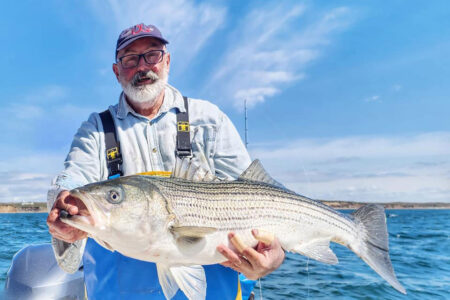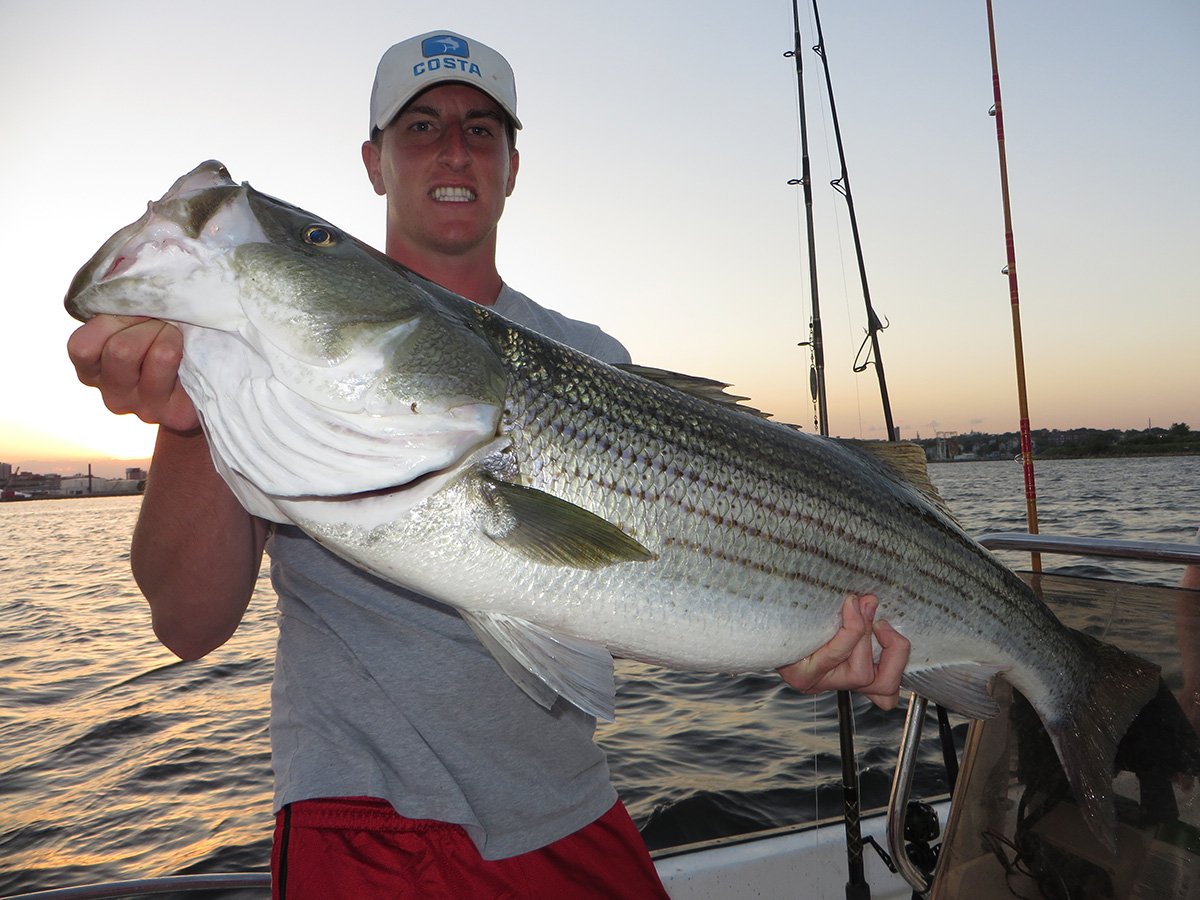
For those who chase down large stripers from the boat, we all know fishing live Atlantic menhaden is a deadly tactic. We also know there is more than one way to fish a menhaden, bunker, pogy or whatever you refer to them as locally. Many snag their bait, place it in a livewell and motor to other spots to fish. Others might snag their bait, reel it in quickly and re-hook the bait onto a waiting heavy-duty conventional outfit. Still others, like myself, often snag the bait and leave it right there on the snagger as the boat drifts off the main school of bait. Last season this latter technique, what I call the “snag and drag,” was the most effective menhaden fishing technique for us.
We work the waters of Narragansett Bay a lot in the spring and early summer for large keepers, but the technique works anywhere that large schools of menhaden congregate. In order to take a large bait like an adult menhaden a striper has to be big, generally at least over 36 inches long, though I have seen smaller, aggressive keepers able to subdue these large prey items.
Past experience has shown us that big stripers usually lurk under or very close to schools of menhaden, and the fishfinder often confirms that fact. So, if the bigger stripers are foraging right under the bait you are snagging, why snag a bunch of them and take them to other places to fish? Our thinking is to fish them right where we snag them in the most likely place to find a large striper.
Getting Down to Business
The snag and drag technique is quite simple. Get a heavy-duty spinning rod with a heavy-duty reel. I like to use braided line (30- or 40-pound test Power Pro) on the reel because of the superior feel of braid. At the terminal end of the line, I set up a 3-foot leader of 30- or 40-pound mono with the snagger snapped or tied at the very end.
We motor around an area as we search for surface flips or whirls that give away the presence of menhaden schools. Then, the snagging begins. I like to just cast my snagger to the area where the menhaden were last seen. I let the snagger sink a bit and reel slowly. I only pull if I feel the slightest bump or bang on the rod tip. The braided line will transmit any movement of fish up to your rod tip.
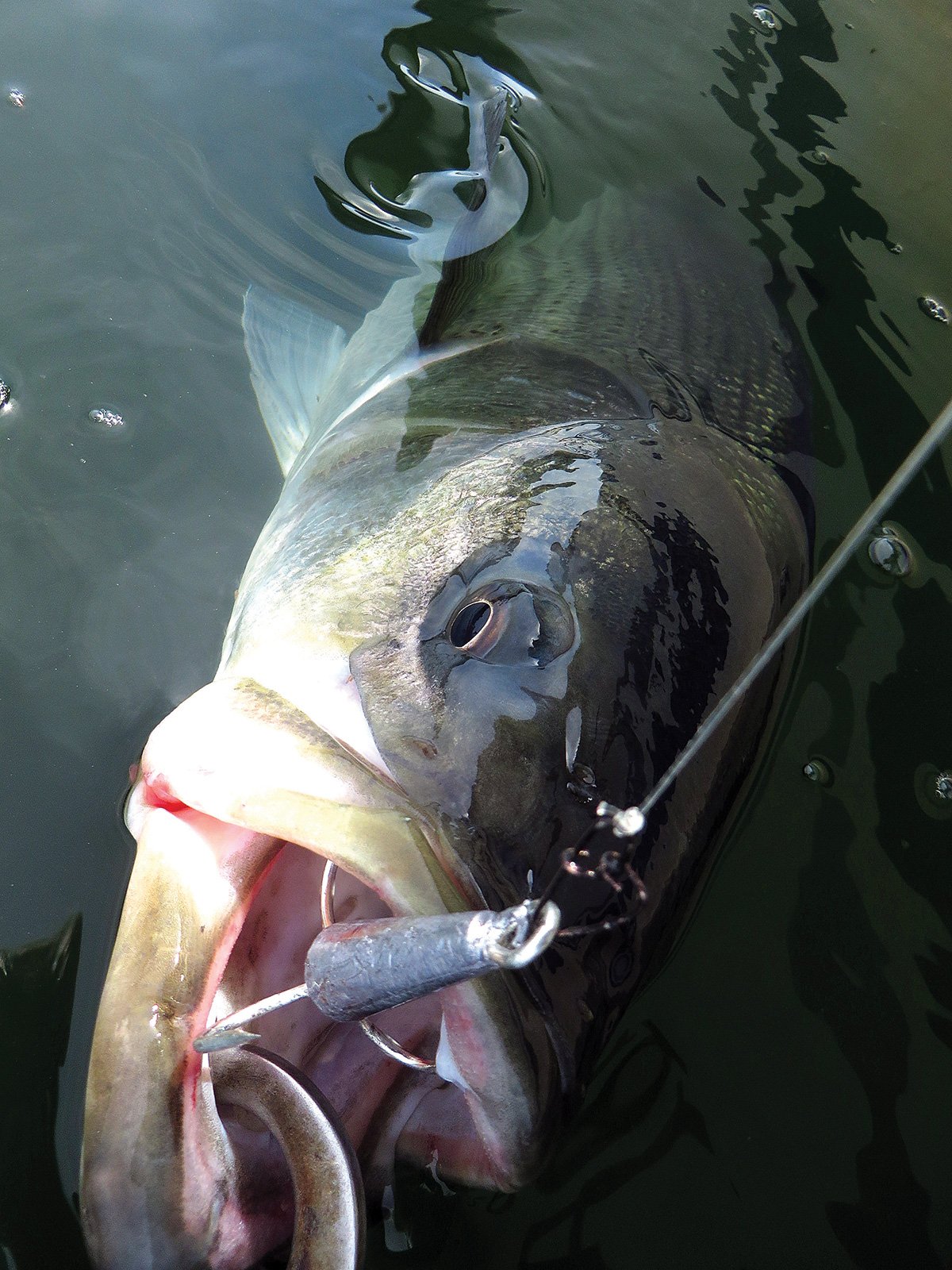
Once the menhaden is snagged, just hold it in place. The boat will drift along and carry the snagged offering away from the main school. Because your snagged bait is getting pulled from the main school of bait, any stripers under or near that school key on the one wounded baitfish or the one being pulled from the security of the main school. Even with thousands of fish in the main school, your snagged bait should be the one that stands out and the one that is attacked!
When a bass keys on your bait, it begins by picking up speed, frantically pulling your rod tip. You then feel a sudden jolt as the predator grabs the bait. At this point the striper usually begins to run with the bait. This is where you should let the fish pull the rod tip down and then strike back hard. Note that we do not open the bail and let the striper pull off a lot of line. For the most part, we are hoping for a catch-and release catch, and that quick strike usually results in a lip or mouth-hooked fish. If you allow the fish to pull off a lot of line on a long take, you will most likely end up with a gut-hooked fish.
On one particular fabulous outing last year three of us in my brother’s boat ended up catching a whopping 40 keepers (up to 45 inches) in a few hours of snag and drag fishing. Of those 40 fish, all but two fish were lip or mouth-hooked. Thirty-eight of those 40 big fish were released while the two badly-hooked fish were kept.
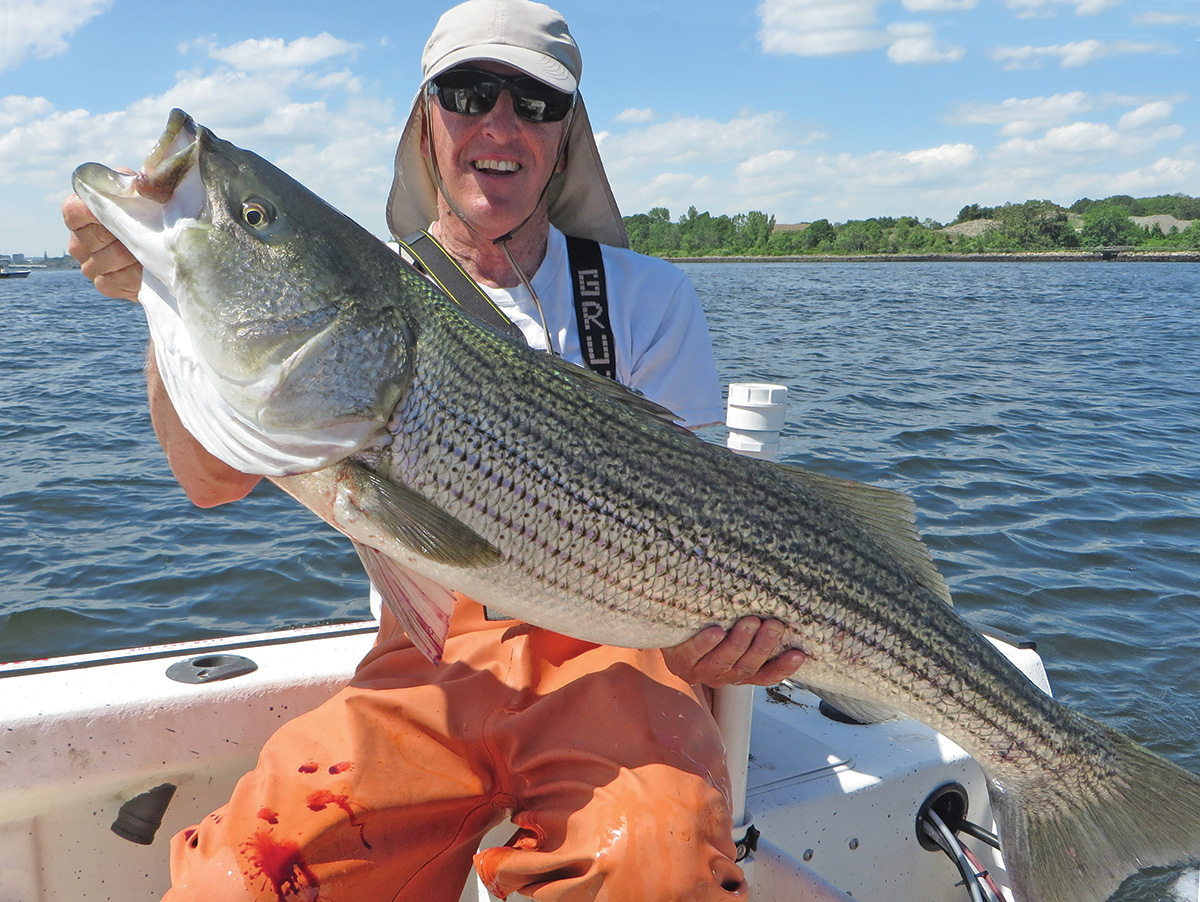
Watch Down Below
We are constantly monitoring our fishfinder when chasing down schools of menhaden. You will come across schools of menhaden that might not have large fish under them or around them. Most of the time you will see that on the fishfinder, and in those instances, nothing will take your snagged offering. When that happens, we motor off to find other schools of bait. It is often a matter of finding the right school of bait that has good numbers of big stripers under them. There were days last year when we could find dozens of schools of menhaden in ‘Gansett Bay. Some had big stripers under them, some did not, but the hunt was part of the fun.
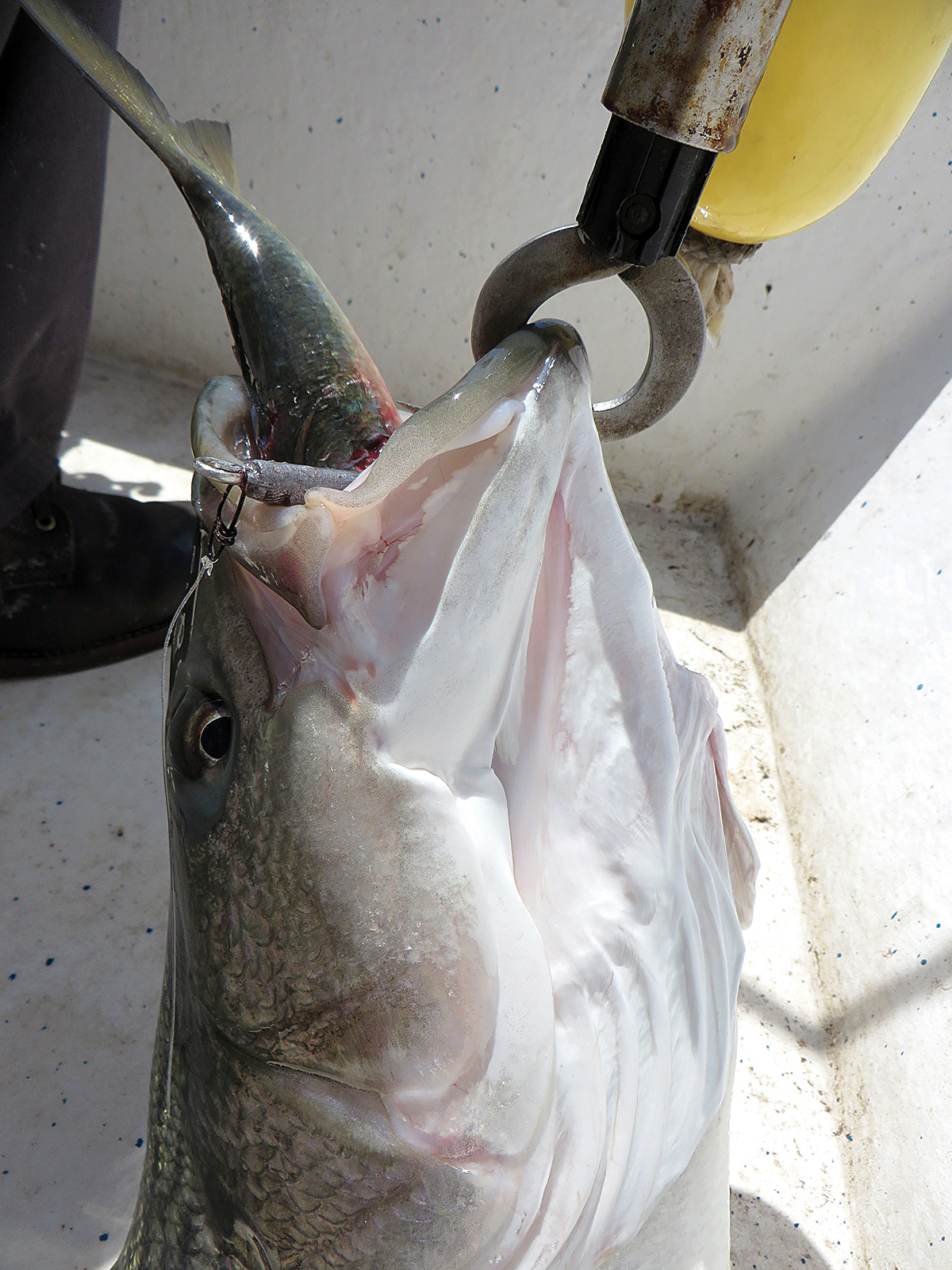
While this is a boating article, I can tell you that I have landed many big stripers from shore while using snagged menhaden. The idea in this case is to snag a bait and let it swim close to the area where it was snagged. If snagged way out, you might even want to reel it slowly, making this similar to the boat’s drift. Two years ago, my son Jon, landed the biggest striper of the year from shore in our family using this shore technique.
Southern New England waters should see a big influx of adult menhaden starting in mid-May, and their numbers should swell into June. Those dates coincide with the arrival of large stripers into southern New England waters. Snag and drag is one heck of an effective means to catch those oversized keepers in the early going. Keep your eyes open for schools of menhaden and have the snagger ready to go!



